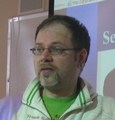LIVING WATER SMART IN BRITISH COLUMBIA: “Launched in March 2021, the Columbia Basin Water Hub will make critical water data readily available to decision makers for watershed management in an era of climate change impacting hydrological flows,” stated Kat Hartwig, Founder & Executive Director of Living Lakes Canada

Kat Hartwig is the passion and vision behind Living Lakes. At the same as she is building Living Lakes, Kat is also mentoring a growing team of young environmental professionals who are very passionate about water stewardship. Everyone wants to continue Kat’s vision. “We set out to build an open source data hub for the Upper Columbia Basin. Now we’ve got the platform built, we’re training groups to upload their data, and we’re receiving feedback from groups and provincial and local governments to ensure we’re supporting their needs. It’s an iterative process,” stated Kat Hartwig.









